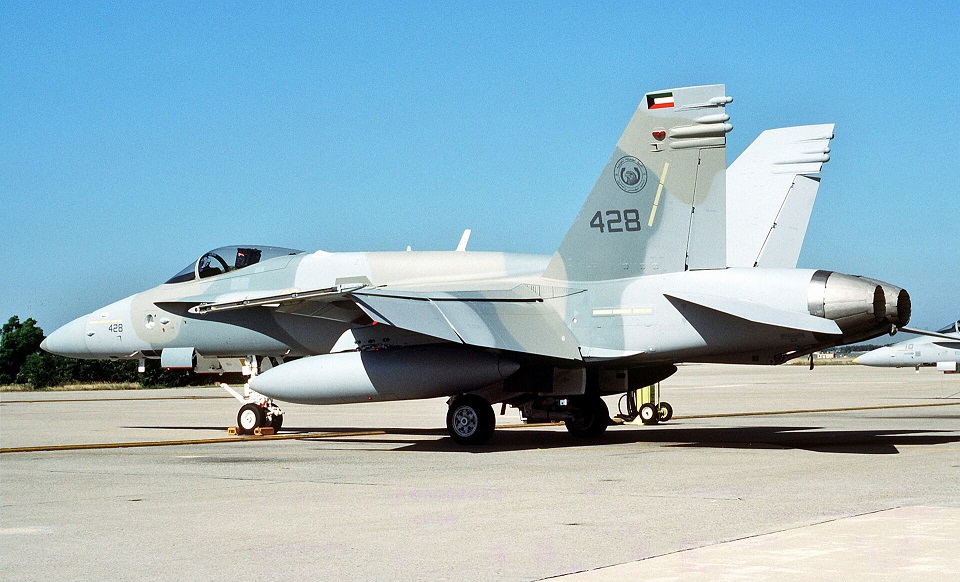Defence
Malaysia In Talks to Acquire Used Kuwaiti F/A-18C/D Hornets

Malaysia is exploring the potential acquisition of used Boeing F/A-18C/D Hornets from Kuwait to bolster its military capabilities.
Discussions between the defence ministries of both nations are underway, and a Malaysian technical team visited Kuwait in June to evaluate the aircraft, as reported by Malaysia’s official Bernama news agency.
Strategic Importance
The acquisition is seen as crucial, particularly in light of increasing militarization in the South China Sea. Malaysia is keen to enhance its air defense capabilities and ensure the security of its airspace.
10 fastest fighter jets in the world:Click here
“We cannot just rely on the 18 Korea Aerospace Industries (KAI) FA-50M fighter lead-in trainers from South Korea, which have not been delivered yet,” an official told the New Straits Times.
Current Fleet and Budget Constraints
Due to budgetary constraints, plans to replace Malaysia’s MiG-29Ns, which are optimized for air defense, have been delayed. This has left the Royal Malaysian Air Force (RMAF) with a limited fleet comprising eight F/A-18D Hornets and 18 Sukhoi Su-30MKMs.
How will be the Tejas Mark 2 compared to the F-16 block 50/52?Click here
“We are in dire need of assets to safeguard our country’s safety and sovereignty,” said Mizan, a defense analyst, noting that the Kuwaiti Hornets could complement the RMAF’s existing fleet. “This is a good interim measure while Malaysia waits for its new multi-role combat aircraft (MRCA). There is ample supply of parts and sufficient support for the Hornets.”
Hopeful Acquisition
Mizan expressed optimism about the potential deal, emphasizing the importance of strengthening Malaysia’s defense capabilities. Acquiring the F/A-18 Hornets from Kuwait would provide a timely boost to the RMAF and enhance its operational readiness.
As Malaysia continues to navigate budgetary constraints and regional security challenges, the acquisition of used Kuwaiti Hornets represents a strategic move to maintain and enhance its air defense capabilities.
Comparison of the F-22 and the Su-57 fighter jets:Click here

Defence
Russia’s NV.17 Hybrid Helicopter Aims to Balance Light and Heavy Helicopter Needs

As Western sanctions continue to impact Russia’s aviation sector, the country is making significant strides in advancing its domestic aerospace capabilities.
Despite the ongoing challenges, Russia has unveiled the Heliburo HB.17, a cutting-edge hybrid-powered medium-class helicopter that promises to reshape both commercial and military aviation.
The helicopter is currently in the technical design phase, with plans for its first flight slated for 2027. This marks a major step forward in Russia’s efforts to modernize its aviation fleet and reduce reliance on foreign technology.
This country tops visa rejections in the popular Schengen countries
The HB.17 is designed as a versatile, multi-role aircraft, capable of performing a wide range of functions. It is built to handle cargo transport, passenger carriage, reconnaissance, and close air support missions. With its robust design and flexible capabilities, the HB.17 is expected to meet the needs of both military and commercial operators, offering a solution for missions requiring a greater capacity than light helicopters but avoiding the limitations of larger aircraft.
One of the most innovative features of the HB.17 is its hybrid power plant. This combination of conventional and electric technologies enhances fuel efficiency, allowing the helicopter to stay airborne for up to seven hours without needing to refuel.
This extended operational endurance makes the HB.17 particularly well-suited for long-duration missions, providing a significant advantage over traditional helicopters. Additionally, the HB.17 will be equipped with modern avionics, ensuring advanced navigation, communication, and operational capabilities.
Qatar Airways Cargo and MASkargo Launch New Strategic Partnership
The HB.17 is positioned to compete with other medium-class helicopters such as the Kamov Ka-60/62 and the Mil Mi-38. However, its hybrid powerplant and modern avionics set it apart, offering a more efficient and technologically advanced alternative.
Its multi-role versatility, combined with its fuel efficiency and cutting-edge systems, gives it a competitive edge in the evolving aviation landscape. The introduction of the HB.17 follows recent reports of Russia receiving a new batch of armored vehicles from the UAE-based Streit Group.
Russia has traditionally focused on producing helicopters for defense purposes, but this time, it appears to be venturing into the civilian helicopter market with the HB.17.
This, along with the ongoing development of the HB.17, reflects Russia’s continued efforts to modernize its military assets and increase its self-reliance, even as sanctions continue to pressure its defense and aerospace sectors.
As Russia faces mounting geopolitical challenges, the HB.17 stands as a symbol of resilience, technological innovation, and determination to maintain its military and aviation capabilities.
-

 Aviation2 months ago
Aviation2 months agoMicrosoft Flight Simulator Raises $3 Million to Bring Back the An-225 Mriya
-

 Airlines2 months ago
Airlines2 months agoQatar Citizens Can Travel to the United States Without a Visa
-

 Aviation2 months ago
Aviation2 months agoQatar Airways bans these new Electronic Devices on plane
-

 Airlines2 months ago
Airlines2 months agoJapan Airlines Rolls Out Free Domestic Flights to International Passengers
-

 Defence2 months ago
Defence2 months agoWhich Country Has the Largest Fleet of Fighter Aircraft?
-

 Airport2 months ago
Airport2 months agoWestern Sydney Airport Welcomes Its First Plane After 6 Years of construction
-

 Airlines4 days ago
Airlines4 days agoDAMAC Air: Dubai’s New Luxury Airline Offers Free Flights for Registration
-

 Aviation2 months ago
Aviation2 months agoDid you know ? Once Boeing 747 carried 1088 passenger in 1991








